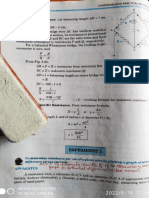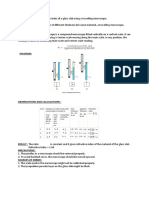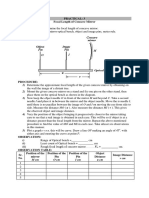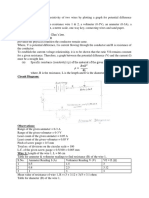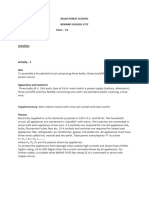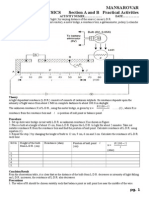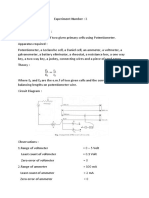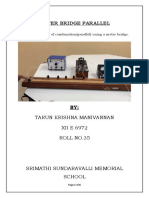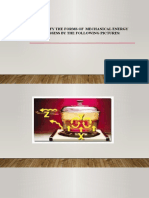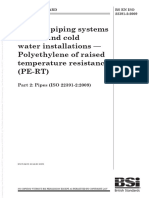0% found this document useful (0 votes)
173 views9 pagesProject
The document outlines a procedure to determine the refractive index of water and oil using a plane mirror, an equiconvex lens, and an adjustable object needle. It includes theoretical background, methodology, observations, calculations, and results, indicating that the refractive index of water is approximately 1.0831 and that of oil is about 1.2886. Additionally, it highlights precautions and potential sources of error in the experiment.
Uploaded by
gmadhavan580Copyright
© © All Rights Reserved
We take content rights seriously. If you suspect this is your content, claim it here.
Available Formats
Download as PDF, TXT or read online on Scribd
0% found this document useful (0 votes)
173 views9 pagesProject
The document outlines a procedure to determine the refractive index of water and oil using a plane mirror, an equiconvex lens, and an adjustable object needle. It includes theoretical background, methodology, observations, calculations, and results, indicating that the refractive index of water is approximately 1.0831 and that of oil is about 1.2886. Additionally, it highlights precautions and potential sources of error in the experiment.
Uploaded by
gmadhavan580Copyright
© © All Rights Reserved
We take content rights seriously. If you suspect this is your content, claim it here.
Available Formats
Download as PDF, TXT or read online on Scribd
/ 9


